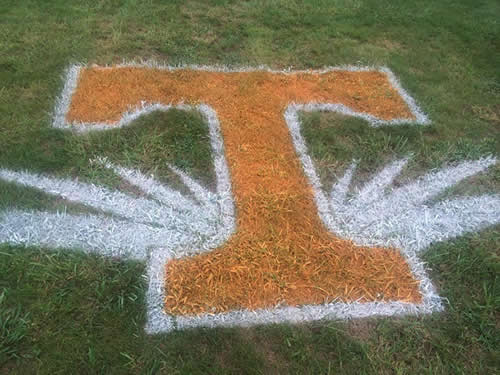
Beth Babbit, Urban Horticulture Specialist & Dr. Tom Sample, Turf Specialist Plant Sciences Department University of Tennessee Extension 5/10/10.
The recent flooding in much of Middle and West Tennessee has been devastating. Many will be rebuilding lives, homes, businesses and landscapes for years to come. These floods will not be easily forgotten. It is certain that Tennesseans will see lasting effects of these storms on our landscapes and gardens for some time.
Many gardeners need information to make decisions on harvesting and replanting vegetable gardens and caring for flood-affected turfs and landscape plants.
The first consideration is food safety from vegetable gardens. It is important to use care when harvesting cool-season vegetables. Floodwaters are contaminated with raw sewage, so vegetables from flooded gardens should be handled with caution. Leafy vegetables such as spinach or lettuce or bulbs/root vegetables like garlic, onions or radish are not easily washed of contaminates and should not be eaten. Some crops, like turnips, that can be boiled pose less of a risk. Visit the Food Safety website for more information about food preparation and safety.
Most newly seeded gardens did not survive the flood, even if they were not washed away. The good news is that with most crops, you have much of the growing season to start over. Give the soil a chance to dry out before replanting. Working wet soils will lead to large dirt clots and soil compaction in the future.
Established landscape plants have a better chance of survival, depending on how long they were under water and how resilient the species. It is hard to predict which plants will survive, and which will have a slow or immediate reaction to low soil-oxygen levels. Most will show effects quickly and die or recover quickly, while others may not show the full signs of flood stress until next year or the year after.
For now, allow the soils to dry out. Cover any exposed roots and remove excess silts and soils covering tree trunks and crowns. Some trees species are more resilient to flooding conditions and will survive, while others will slowly show signs of lack of aeration (too much water around the roots and not enough oxygen). Leaves will turn yellow, drop off and eventually the plant will respond with branch dieback. Anticipate that plants may be stressed, with poor growth and more diseases. Excessively wet soils encourage root and crown diseases like Fusarium spp., Phytopthora spp., Pythium spp. and Rhizocotonia solani.
Reduce stress and disease by improving the site’s drainage. Replace lost soils with organic matter. Maintain plant heath by avoiding excessive nutrients while plants are recovering. Use fertilizers sparingly – they can accelerate disease populations. Organic matter will replace lost soil microbes as well as slow-release nutrients to promote plant health.
During this growing season, cut back only the branches that are dead or broken from the storms. Wait to see if other parts of the plant start to bud out in the next month or two.
Too much water can be just as damaging to turfgrasses as a severe drought. Although flooded turfs may be prone to erosion, turfgrass plants may not be directly injured by water. Unfortunately, saturated soils and the debris left on the turf surface after water recedes can be especially problematic.
Soil erosion is greatest when flood waters flow rapidly in channels across a turf. Several factors influence the amount of damage resulting from turf being covered with water. Turfgrass species vary in submersion tolerance. For example, bermudagrass and creeping bentgrass (a species commonly maintained on golf greens in TN) are usually much more tolerant of submersion than perennial ryegrass or red fescue. The level of turfgrass injury resulting from submersion also depends on the water temperature and depth, and the amount of time the turf is submerged. Turfgrass plants with leaves extending above the water surface usually survive longer than those that are completely submerged. When soils remain too wet for too long, oxygen becomes limiting near turfgrass roots and the carbon dioxide level rises. When the soil is saturated, the soil oxygen may be depleted within a few hours, and plants are less able to take up water and nutrients. The yellowing of turfgrass plants after being submerged may be due to a lack of nitrogen.
More soil and debris are deposited by flood waters when water is moving slowly. Soil and debris two or more inches deep should be removed from the turf as soon as possible after flooding. It is often very difficult to remove a thin (e.g., one inch or less) layer of soil or debris. If the thin layer of soil and debris begins to restrict the rate at which water moves from the turf surface into soil, consider core aerifying during favorable weather.
DISASTER RELIEF INFORMATION TO ASSIST FLOOD VICTIMS